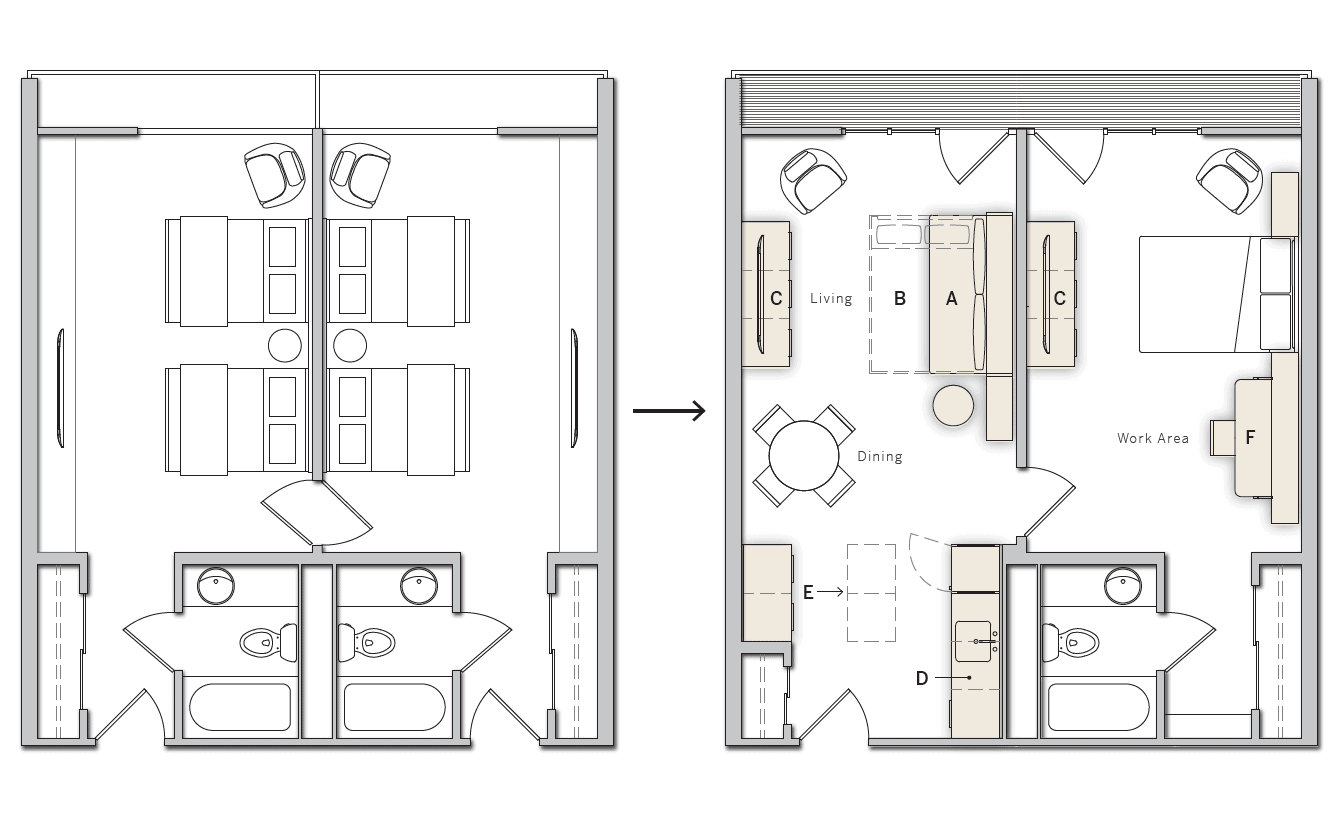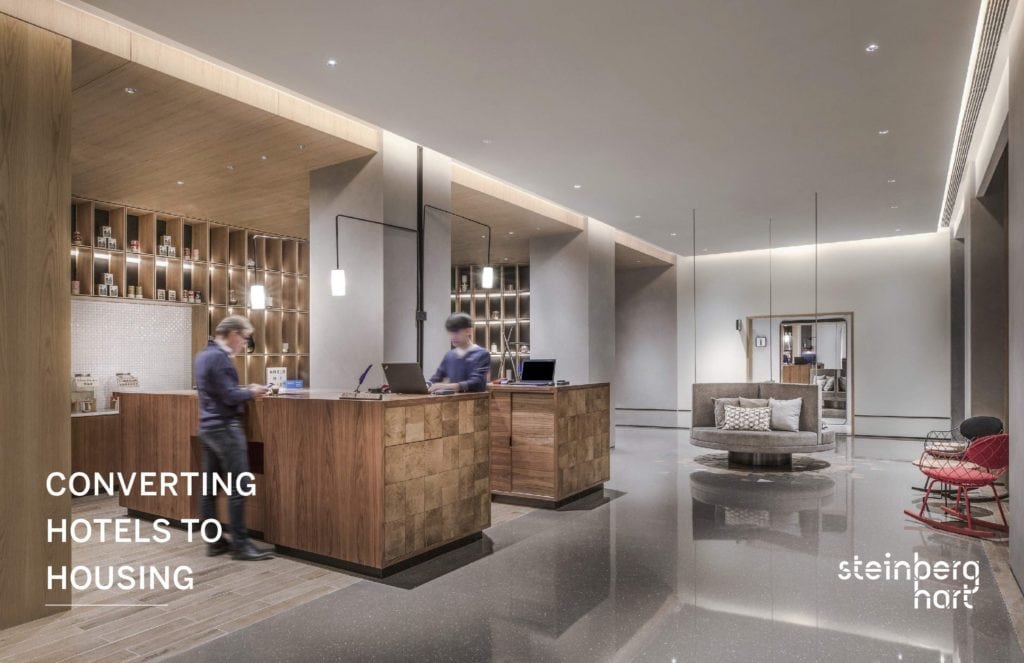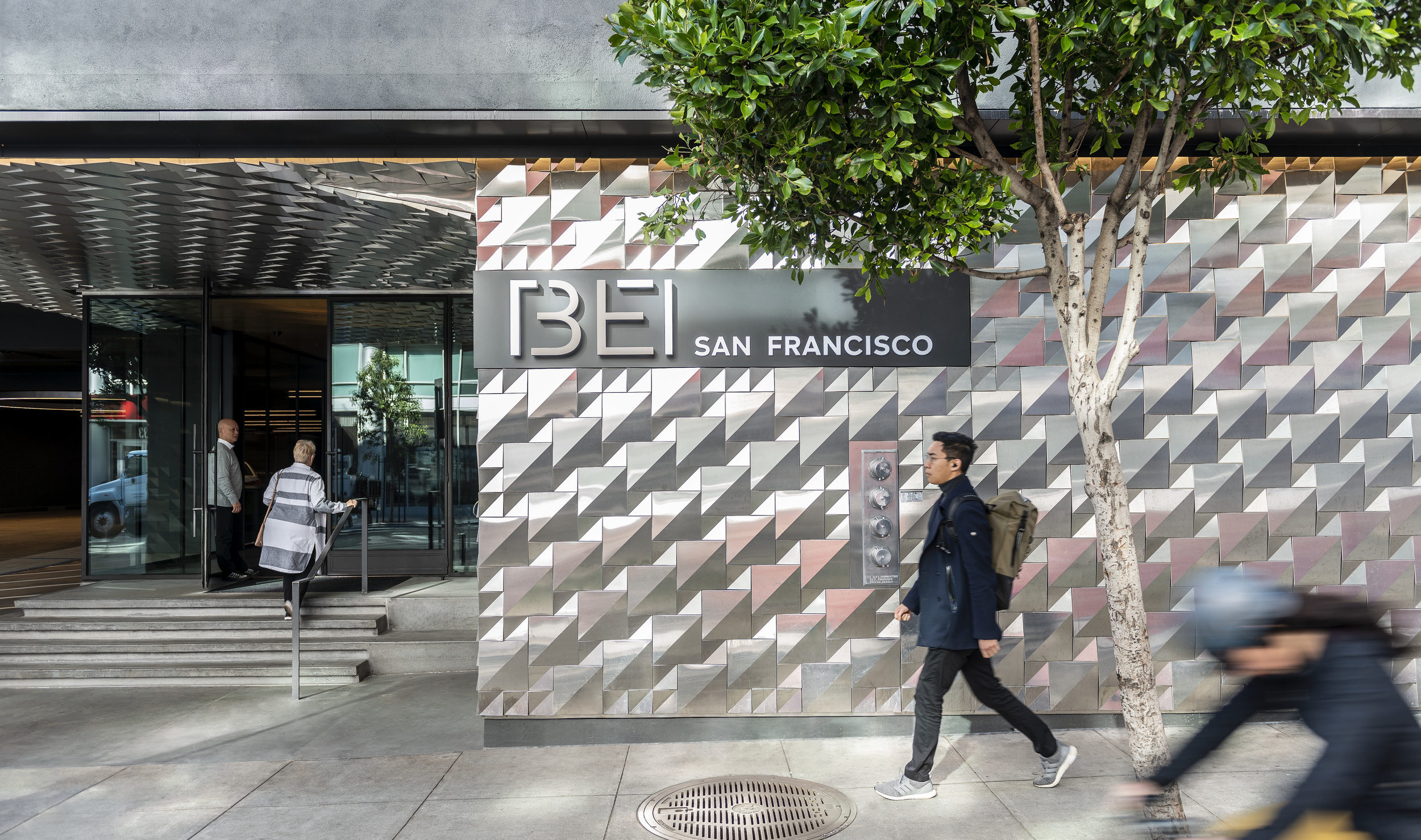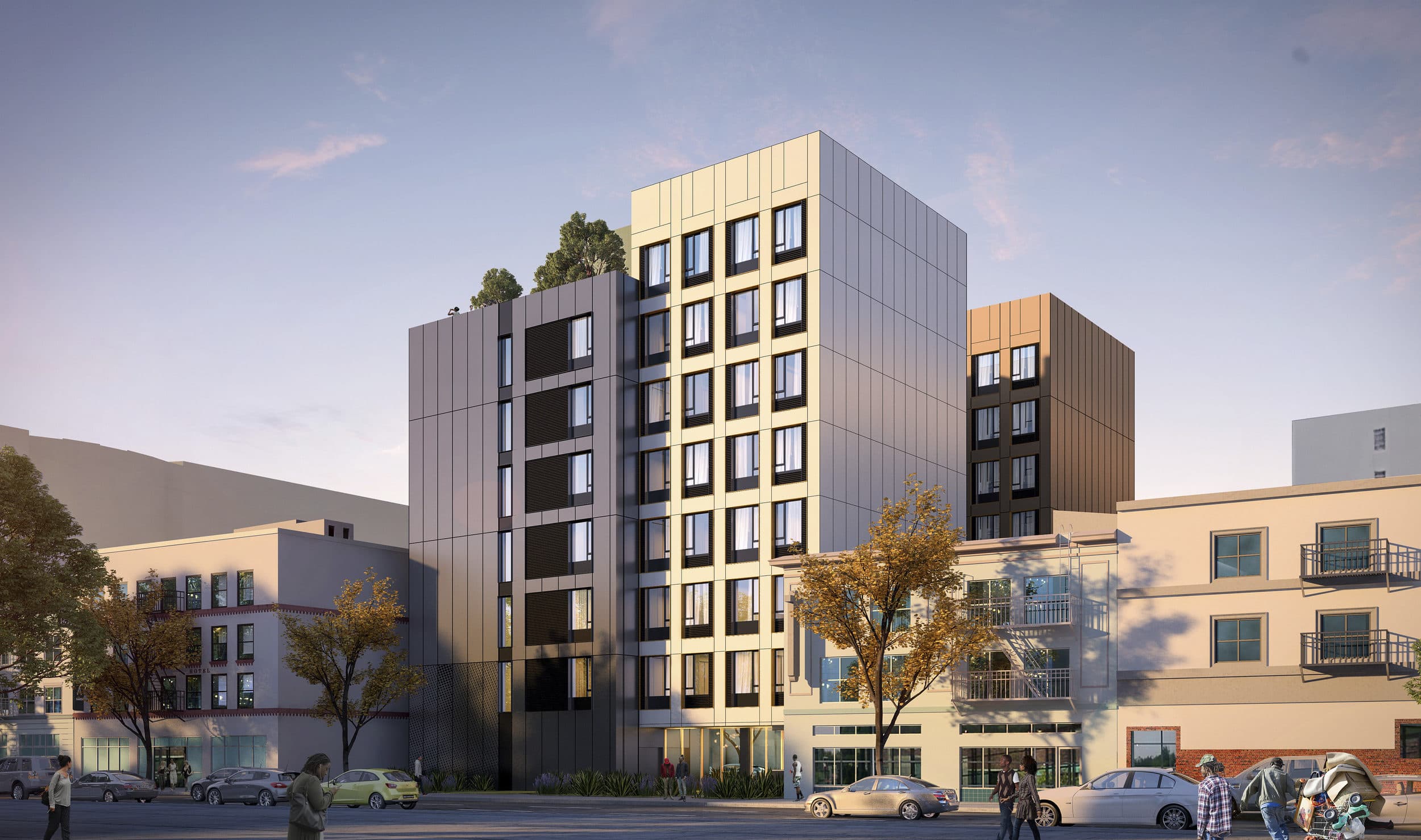Converting Hotels to Housing

The idea of converting hotels to housing is not new. But today, this idea is particularly relevant for three primary reasons: first, the nationwide shortage of affordable housing is reaching a breaking point; this is all the more acute in urban city centers where rents have continued to climb while salaries stagnate. Second, and closely related to the first, the homelessness crisis continues to ravage our country, particularly in the state of California where a quarter of the nation’s unhoused individuals live. And finally, the Coronavirus pandemic has not only exacerbated the first two issues, it has also had a devastating impact on the hotel industry.
The numbers paint a dire picture for the hotel industry. As of October 2020, average hotel occupancy has shrunk to a low 40% from 70%-80%. 25% of hotels cannot pay their debt service, which has resulted in nearly $20.6 billion in hotel commercial mortgage-backed security loans at 30 or more days in default. Many hotel properties have depreciated to 25-30% of their pre-pandemic value.
Meanwhile, as the nation sheltered in place, shelter remains out of reach for many Californians. The high cost and long time it takes to build affordable housing in California is making matters worse. In April of 2020, The Los Angeles Times reported that the average cost to build one unit of affordable housing reached $500,000. To meet the need for affordable housing in our state, we must generate 125,000 units each year for the next ten years. The math seems impossible given our current approach to designing and delivering housing.
Remarkably, the pandemic has offered a unique opportunity to address both the health crisis and the homeless crisis. Less than two weeks after the State of California went into lockdown, Governor Gavin Newsom announced Project Roomkey, with the goal of securing 15,000 available hotel rooms to serve as emergency housing and safe isolation for Californians experiencing homelessness. The project received FEMA funding and quickly moved forward thanks to the leadership of cities and counties who sprung into action across the state. In the end, Project Roomkey moved more than 22,000 Californians off the streets, out of shelters, and into motel rooms during the COVID-19 pandemic.
Following the success of Project Roomkey, Governor Newsom launched Project Homekey, providing grants for the purchase and rehabilitation of buildings that will provide critically needed housing units for people experiencing homelessness throughout California. In total, Homekey utilized $846 million to rapidly purchase and subsidize 6,029 units in less than six months from start to finish. With the average total cost per unit at $147,974, ninety-four Homekey projects have closed escrow.
The increasing number of people experiencing homelessness, the lack of shelter beds, and the shortage of affordable housing have been at crisis levels in California for more than a decade, but it took a global pandemic to elevate these crises to a state of emergency. Project Roomkey and Homekey are proof of what we can accomplish together when we put our minds to something with all the urgency it deserves. As we overcome the pandemic and the associated economic downturn, let us not lose our willingness to take bold and imperfect action to address homelessness and housing affordability.
We should look at repositioning hotels to help in addressing the housing shortage as a long-term solution. By leveraging these existing assets, affordable, high quality housing can be provided five times faster on average than new construction and at one third of the cost.
We believe that all housing types contribute to addressing housing affordability in California, so we encourage you to look at each hotel as a unique opportunity. Depending on location, size, and configuration, different hotel types – motels, mid-range, limited service, full service, or conference – are better suited for different types of housing – micro, co-living, affordable, market rate, or senior. It may even make sense to convert only a portion of the hotel to financially stabilize the property and provide the needed housing for the community.
In this guide, we discuss the technical challenges, building code considerations, entitlement limitations, and design opportunities that a hotel conversion presents. We have outlined the key considerations and we have shared a few case studies. Using this guide, you can explore what is most appropriate for a given hotel property.
While our team put this document together in a time of crisis, we sincerely believe that it is a tool that can be used over the coming years to help cities, counties, and property owners understand the opportunities and challenges of converting hotels to housing. We encourage you to keep an open mind and think about how different properties might be best utilized for both the owner and the community.
Click here to read our Guide to Converting Hotels to Housing


